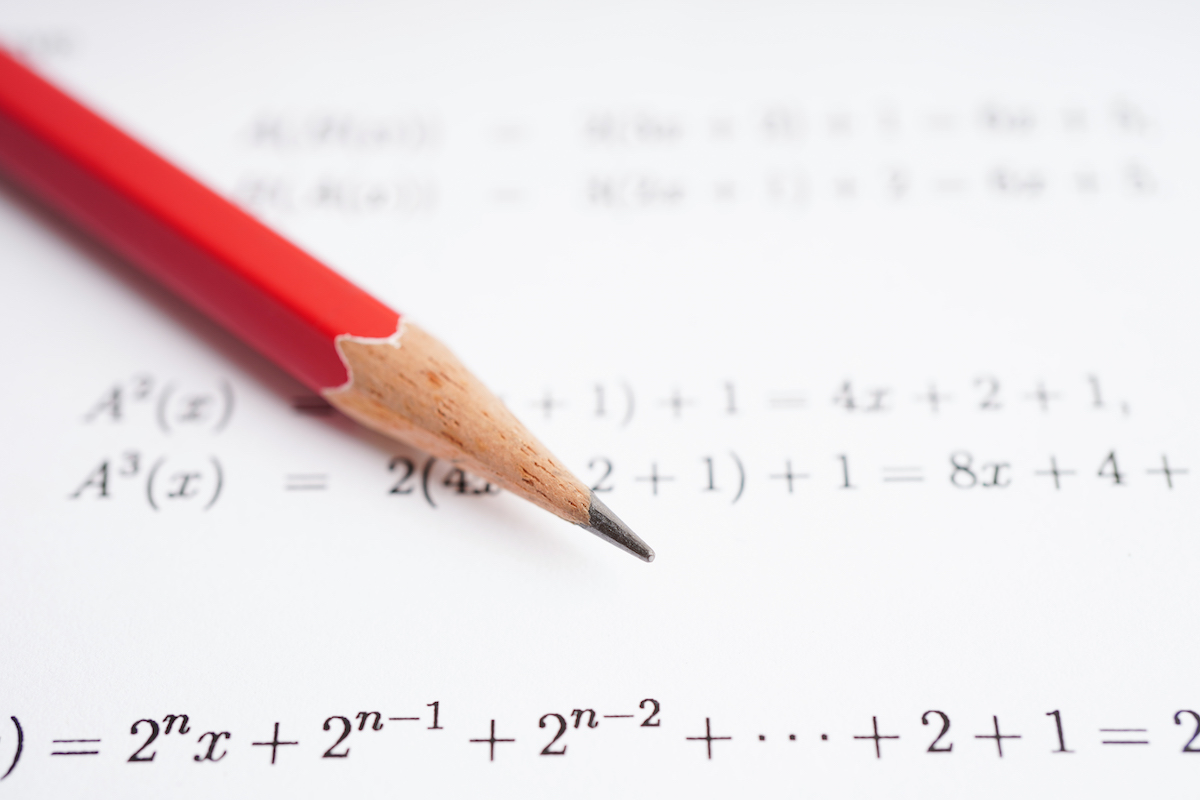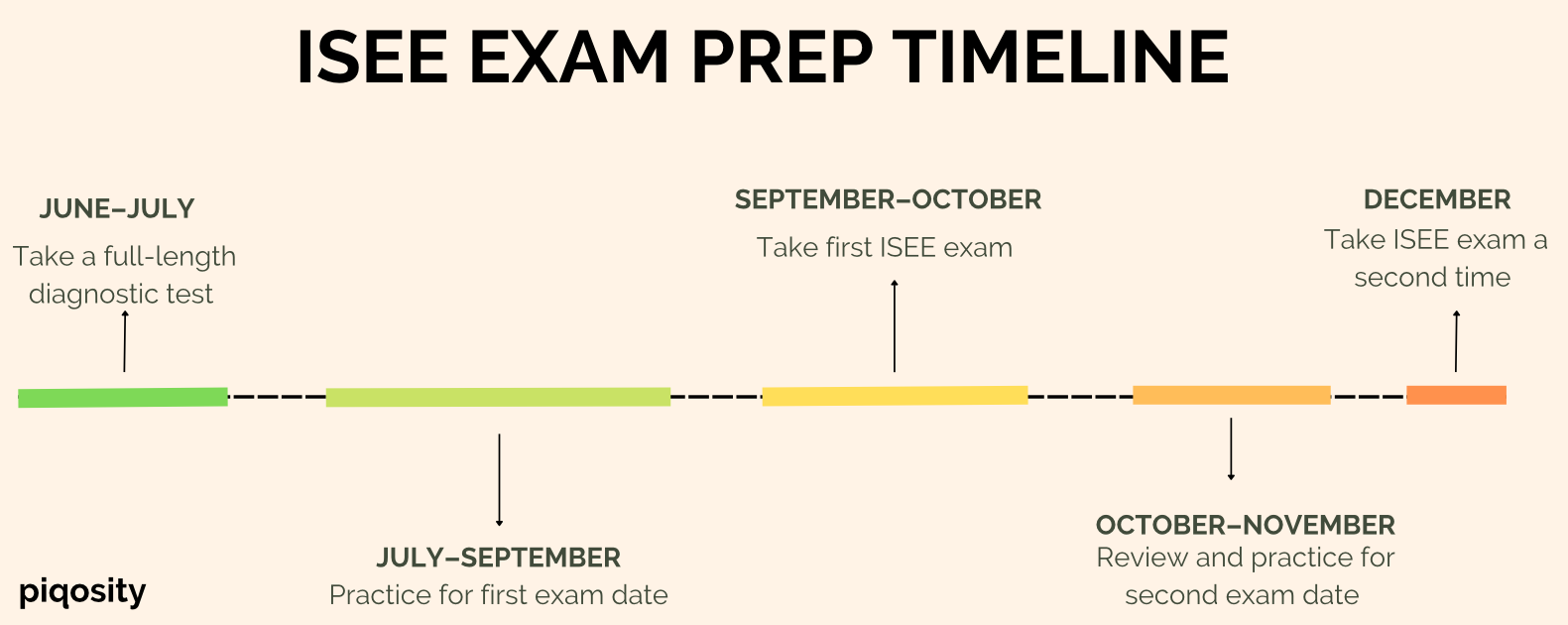
If you or your child is interested in a private middle or high school, you’re likely exploring what to do when it comes to ISEE exam prep. The ISEE (typically pronounced “i-see”) is the Independent School Entrance Examination, used in the process of determining admissions for many private schools. A good ISEE score can set students up for success, which is why it’s so important to prepare for the test well ahead of time.
The first question students and parents have after deciding to take the ISEE is usually “when should I start studying for the ISEE?” Of course, the best time to start preparing for the ISEE will depend on your test date, but we recommend that you begin preparing two to four months in advance of your chosen test date.
We also recommend that every student takes the exam twice (at least), with about two months between test dates. Retaking standardized tests can help boost scores, especially when students practice and work on their weaknesses between tests.
Before we dive into test dates, let’s cover the basics of ISEE testing. Typically, students are looking to prepare for three ISEE test levels:
- Lower Level which is taken by students applying to 5th or 6th grade
- Middle Level which is taken by students applying to 7th or 8th grade
- Upper Level which is taken by students applying to 9th, 10th, 11th, or 12th grade
Additionally, students may only take the ISEE test once per testing season. The three testing seasons are defined as follows:
- Fall: August–November
- Winter: December–March
- Spring/Summer: April–July*
*Note that the Spring/Summer testing season is typically only applicable to transfer students.
ISEE Exam Prep Timeline
So, how can you make your ISEE exam prep as effective as possible? Let’s look at a suggested timeline.
For simplicity’s sake, we’ll use the example of a Houston student applying for entrance to private schools for their 9th grade year to demonstrate how ISEE test prep timing works out.
Most Houston private schools require applicants to submit their ISEE scores in January. So, in the case of our Houstonian student applying to the ninth grade, the best time to start ISEE exam prep would be in the summer before they enter the eighth grade.
This student would be limited to the Fall and Winter testing seasons. Additionally, since they would need to submit their scores in January, only December testing dates would be available to them. In order to have an adequate amount of time for preparation between test dates, this student would aim to take their first test in September or October and their second test in December.
June or July: Take a Diagnostic Test
Using our Houston student as an example, preparation for a September or October test date should start in June or July. Of course, every student will require a different amount of preparation, but two to four months of ISEE exam prep is a good rule of thumb.
At the very beginning of their test prep, students should take a preliminary practice exam to understand their baseline score and see where their strengths and weaknesses lie. Knowing their current capabilities will inform their practice going forward and help them see how they progress throughout their test prep journey. Piqosity offers a free mini-diagnostic exam when you sign up, so use it to your student’s advantage to see what their score would be if they took the ISEE today.
After taking the diagnostic test, the student should start becoming familiar with the content they saw on the test. Familiarizing yourself with the concepts tested on the ISEE, especially those that you struggled with, can put you in a better position to start ISEE exam prep. Being aware of your strengths and weaknesses can help you guide your preparation to maximize its benefits.
July–August: Practice, Practice, Practice!
Once a student has their baseline score and knows how much time they have before the exam, it’s time to study! The best way to ensure that they’re learning consistently and progressing towards their goal is developing a test prep routine. Students should set intermittent goals for their progress and create a realistic schedule that they’ll stick to.
Every student has a different learning pace and attention span, so no one schedule will work for everyone. Still, we recommend that a basic pace is three hours of test prep a week—one hour of learning and two hours of practice material.
Learning ISEE Content
As they’re learning concepts and practicing them, students should cycle through the subjects tested on the ISEE:
- Verbal Reasoning
- Quantitative Reasoning
- Reading Comprehension
- Math Achievement
The learning aspect of their preparation will allow them to become acquainted with the ideas they aren’t familiar with or refresh their existing knowledge. To optimize their learning, we recommend that each week students spend approximately:
- 30 minutes reading and watching lessons about material on the ISEE exam
- 15 minutes reviewing tested concepts in math
- 15 minutes reading and study vocabulary words
- 15 minutes learning some basic test-taking strategies
Practicing ISEE Content
On the other hand, the practice aspect of their preparation should prioritize working through sections of full-length practice tests. We recommend prioritizing full-length practice tests because they allow students to become familiar with the types of questions they’ll see on the real test and get comfortable with the test’s pacing.
So, a suggested breakdown of a student’s weekly practice would include:
- 20–35 minutes of working through a Verbal Reasoning or Reading Comprehension section from a full-length test
- 35–40 minutes of working through a Quantitative Reasoning or Mathematics Achievement section from a full-length test
- 20–30 minutes of supplemental short bursts of practice for weak points
Let’s look at an example week of preparation might look like, using our eighth-grade example student and assuming they want to break their ISEE exam prep into four approximately thirty-minute sessions a week.
- Day 1: 30 minutes of reading and/or watching lessons covering their weak points in ISEE math concepts
- Day 2: 20 minutes spent working through the entire Verbal Reasoning section of a full-length practice test and 10 minutes reviewing their results, taking note of which questions were most difficult
- Day 3: 35 minutes spent working through the entire Quantitative Reasoning section of a full-length practice test
- Day 4: 15 minutes spent reviewing their Quantitative Reasoning practice, taking note of their most challenging concepts and 15 minutes spent reviewing test-taking strategies
The next week, the student would work through the Reading Comprehension and Mathematics Achievement sections of the full-length practice test they started the previous week. Additionally, they might swap out their 30 minutes of math review for vocabulary practice if that would be more beneficial for them.
Of course, every student will have different needs. Therefore, their practice should be tailored to their specific strengths and weaknesses, the time they can dedicate to ISEE exam prep each week, and their goals.
September–October: First Test Attempt
In September or October, we recommend that a student take their first attempt at the ISEE test. Going back to our Houston student example, this student would be in the first semester of their eighth grade year when they take the ISEE test for the first time.
We recommend that students first take the exam in the middle of the fall testing season because it will allow them to get more of the next grade level in before testing. For instance, our example eighth grader prepping for the Upper Level ISEE can learn more Algebra I content in school before being tested on it.
Of course, taking tests can be a stress-inducing experience for many students, especially when it comes to standardized tests. That’s where test-taking strategies and test-anxiety management comes into play. Giving yourself enough time to take the ISEE twice also helps with test-taking anxiety since you have multiple chances to get your best scores.
October–November: Practice (Again!)
Since the winter testing season doesn’t start until December, the period between your two chosen test dates should be spent learning and practicing with a focus on your weak points. Therefore, your preparation routine will likely look different than your first round of ISEE exam prep.
For example, let’s say our example eighth-grader excelled in Verbal Reasoning and Reading Comprehension, leaving little room for improvement. However, they’d like to improve their scores in Quantitative Reasoning and Mathematics Achievement. In that case, they’d spend less time learning and practicing the sections they already excelled in and instead dedicate that time to their more difficult subjects.
Ultimately, the goal of this second preparation period is to bolster your score as much as possible.
Therefore, your first-test scores and analysis should guide your second round of ISEE exam prep.
December: Second Test Attempt
Once the winter testing season starts, a student will take the ISEE for a second time. Remember, we’re recommending December with the context that our example student must submit their scores to schools by January.
However, it is really just important to keep two things in mind when picking a second test date:
- Giving yourself enough time to improve your scores
- Ensuring that you have enough time to submit your scores to schools before their deadlines
Other than these notes, the best test dates for you or your student can absolutely vary, and it will be important to adjust this recommended timeline to your individual needs.

The Best ISEE Course Online—Piqosity
As we’ve described above, Piqosity is here to help you excel on your ISEE exam prep journey! Along with our full-length, online ELA and Math courses for grades 6-11, we offer full ISEE test prep courses for the lower, middle, and upper level ISEE, each of which includes 10 practice exams, dozens of concept lessons, personalized practice software, and more.
The best part? You can try out all of Piqosity’s features with our free community account. When you’re ready to upgrade, Piqosity’s year-long accounts start at only $89. Plus, get a 10% off coupon just by signing up for our mailing list!



Leave A Comment